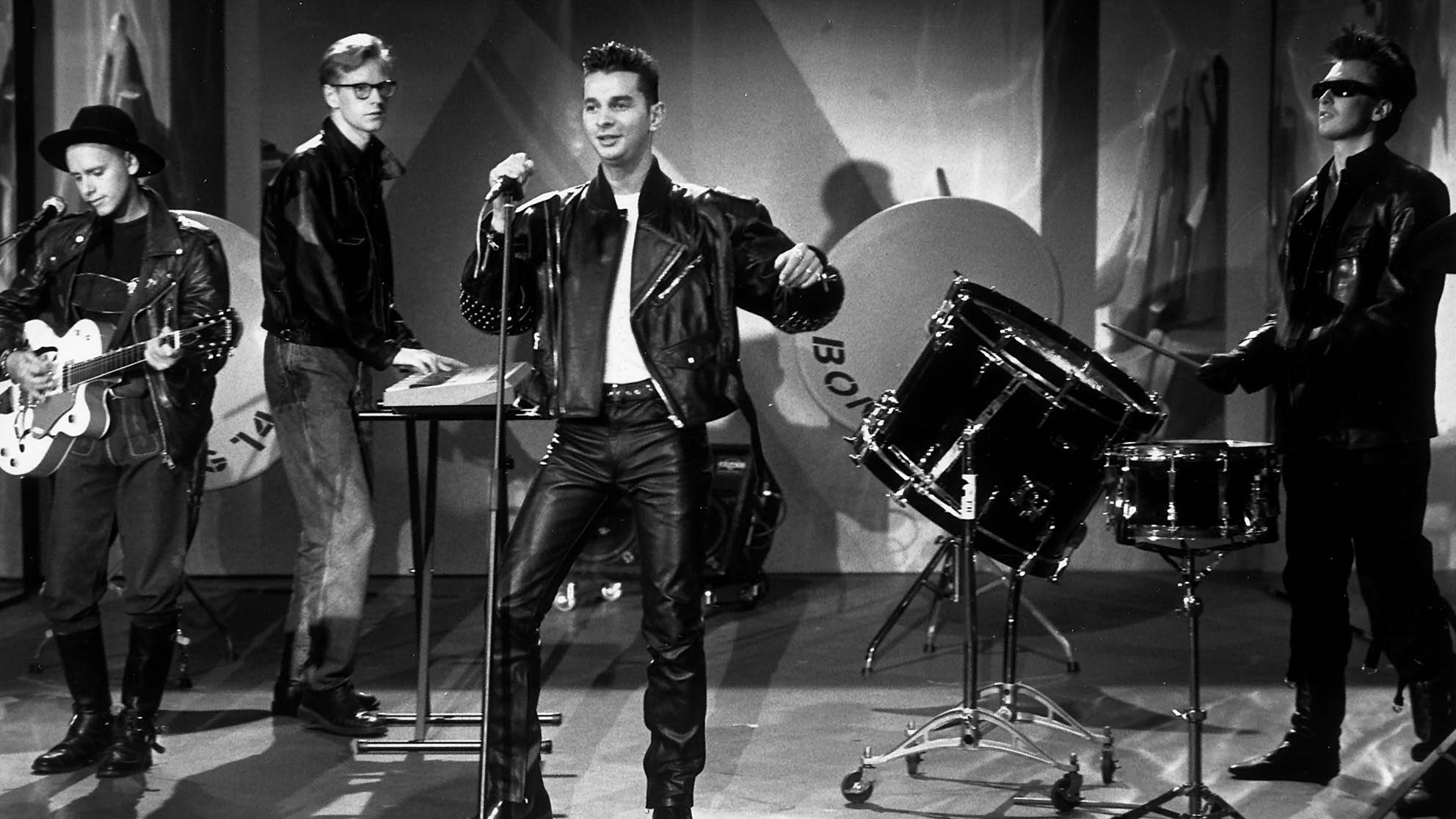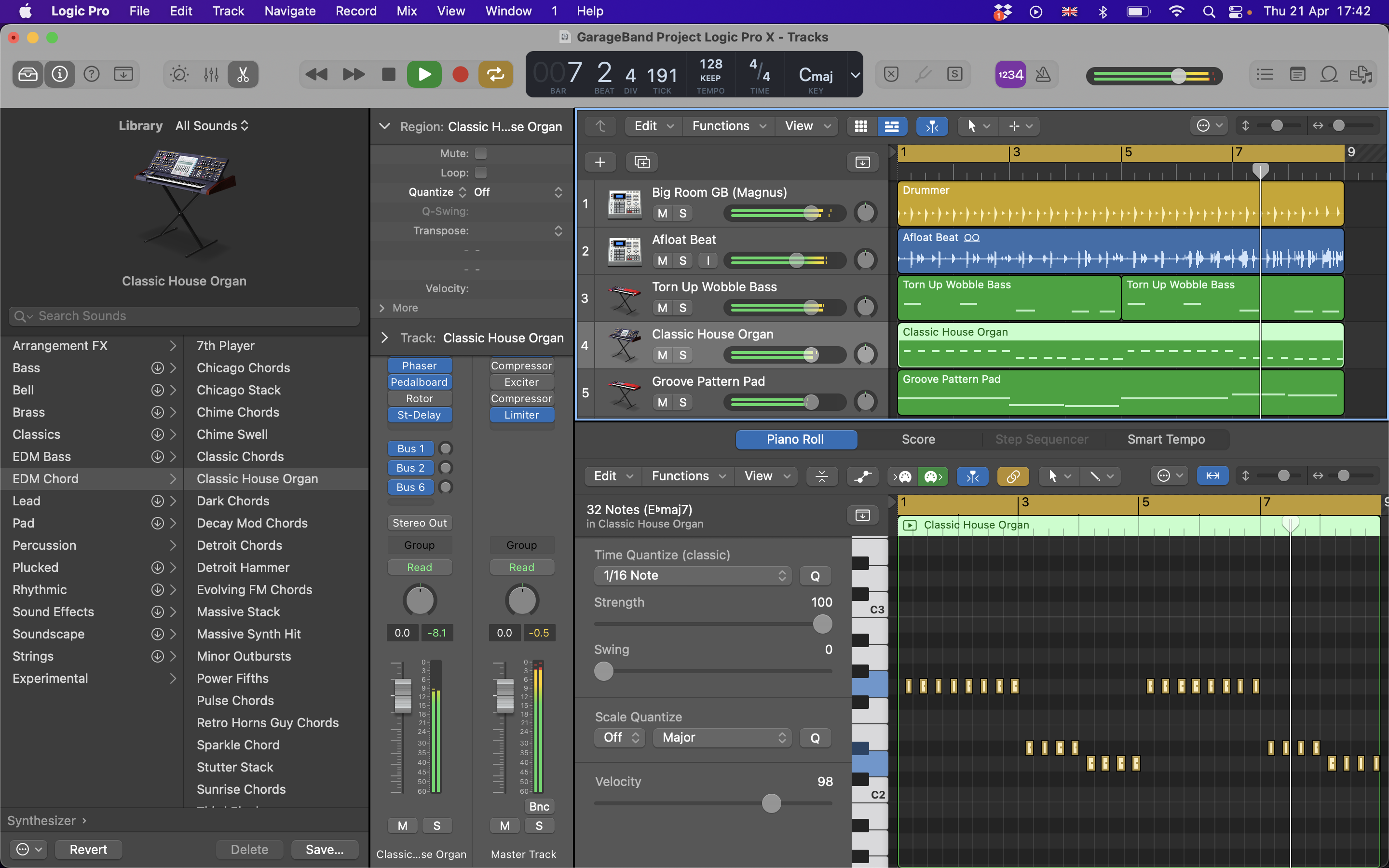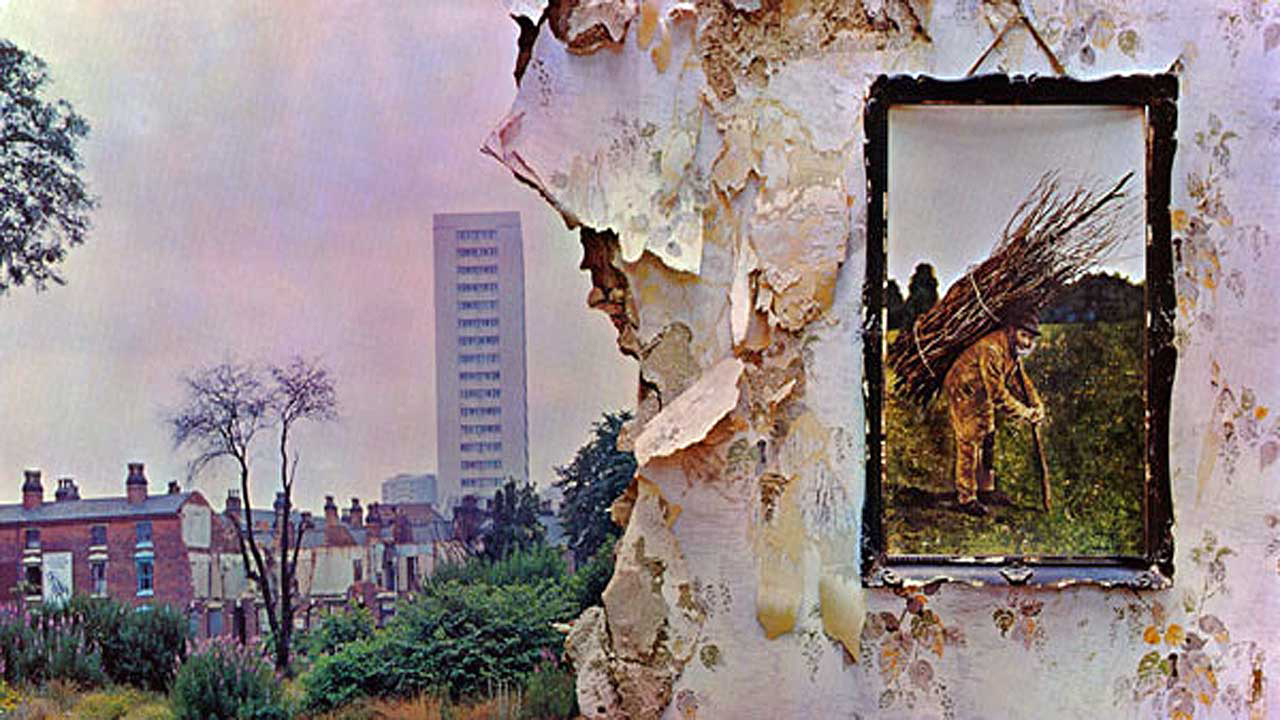
You couldn't script it; Essex band spend years gradually raising, evolving and refining a pioneering sound album after album, tour after tour, all with minimal compromise. Then truly break through in America with an album and tour under the tongue-in-cheek title… Music For The Masses.
Of course, Depeche Mode's story is much more nuanced, and frequently as tragic as it is glorious. But perhaps no song in their catalogue captures this mixture of the darkness and light as Never Let Me Down.
The centrepiece of Music For The Masses and a key part of setlists since, it showcases a band who perfected the art of bridging the electronic and rock worlds with masterful popcraft. And therein lies the true essence of classic 'Mode; it's as much about the sonics as it is the songwriting. Step forward Alan Wilder and Martin Gore.
Wilder's addition to the group's ranks after he replied to a melody maker advert in 1981 looking for a synthian to replace the departing Vince Clarke proved to be a masterstroke. Though he was a part-time recruitment at first. Wilder was a virtuoso with keys, but as much an engineer as a musician; willing and able to do the unglamorous "screwdriver work" in various studios around Europe that made Depeche Mode a stadium-conquering band and influence on musical mavericks like Trent Reznor.
The band's trilogy of classic albums, which began with 1986's Black Celebration broke through with 1987's Music For The Masses and went stratospheric with 1990's Violatorm, is a story of Wilder's synth evolution and absolute dedication to the band as an engineer of sounds as much as it is Gore's songwriting brilliance, a creative dynamic that nevertheless sees Gore with the sole writing credit for Never Let Me Down. Indeed, the band would prove time and time again just how much more than a songwriter is sometimes needed to make a song timeless. Little wonder many of the Mode faithful still pine for Wilder, who left the band in 1995.
Never Let Me Down Again brings Depeche Mode's late '80s gifts together in dramatic form; the architecture of Gore's original demo being taken to new places. Pounding drums (more on that later), the weaving of processed guitar riffs into an electronic soundscape and the euphoria shadowed in the tragedy of its theme, beautifully conveyed by Dave Gahan's baritone. It is glorious heavy synth-pop created by intricate design. And in true Depeche Mode form, it's not a love song in the traditional sense.
Gore told Bravo magazine in 1987 that "…the song has nothing to do with relationships. It's about the concept of fleeing from reality and the evil awakening afterwards. Any kind of fleeing. Drugs, alcohol, or whatever."
"We used to discuss beforehand how we were going to make each album different from the last, and that became more important to us as time went one – that we weren't just going to repeat a formula," reflected Wilder in footage used for Music For The Masses documentary above.
That desire to push forward saw the band producing Music For The Masses alongside engineer David Bascombe (credited as co-producer but mainly engineering on the album by his own admission as well as mixing) after a trio of records with Gareth Jones and Daniel Miller – and only a year after Black Celebration.
While that album saw recording sessions in London and Berlin, the sessions for Music For The Masses would take place in London's Konk studios, as well as PUK in Denmark and Paris's acclaimed Guillaume Tell facility.
Bascombe was a savvy choice; he'd already worked with Peter Gabriel and Tears For Fears' Songs From The Big Chair as an engineer. Gahan had heard his work on the latter – perhaps hearing parallels with the Songs From The Big Chair's bleak but anthemic opener Shout – and made the suggestion. He ended up becoming a vital contributor in the song – as did a sequencer mistake.
"Never Let Me Down Again was the one I was really, really pleased with," noted Bascombe in the documentary. "I was really involved with the drum sounds on that. The guitar intro was actually an accident because [with] the sequencers we were using in those days, that guitar was sampled and it just ran on the count-in over the start of the track but it wasn't supposed to be. We all went, 'That's great' and so that was a happy accident."
"It's a really good guitar riff – guitar sound and riff," noted Wilder in the 2010 Der Western interview posted above. "I think we put it through some kind of filter and re-recorded it back in, then sampled it. It's just got a great sound. I remember there was a rap group called 3rd Bass that sampled that riff and then put it over a rap rhythm. I always liked their track as well."
The song is also notable for this introduction of Gore's increasing interest in guitar into the DM sound palette; something Enjoy The Silence would continue on the next album, Violator.
"That's still one of my favourites, and it's clearly still a live favourite as well," added Wilder speaking to Der Western, he had been out of Depeche Mode for a decade at that point but still performed instrumental versions of the track during live performances with his Recoil project.
It displays a blend of distinctive musical components and devices - some old Mode and some making their debut
Alan Wilder
Both he, Gore and the late Andy Fletcher used E-mu Emax keyboards live to activate samples and play parts on the '87 and later tours – including the sounds of Never Let Me Down Again.
The studio sounds are obviously a little more complicated – especially on the drum side of things. Let's start at the beginning first.
"Primarily programmed at Alan's house, the basic demo was restructured to emphasise the chorus in an attempt to improve the overall flow of the track," noted Wilder in his 1998 editorial covering '86-/98 on the original Recoil website. "It displays a blend of distinctive musical components and devices - some old Mode and some making their debut.
"Most notably, Never Let Me Down illustrated the inaugural use of sections of live performance as opposed to just single notes being sampled and manipulated – best demonstrated by the distinctive opening guitar riff, which was originally played by Martin then heavily processed using a number of effects."
I said, 'Right, I want to use When The Levee Breaks's drums on this.'
Bascombe goes into more detail about Gore's heavily effected electric guitar riff mentioned earlier in the excellent two-part video interview with Vaughan George posted above.
"The guitar [intro] we did at PUK," he confirmed. "It was probably [first] a synth part, then we thought, 'Let's just do it on guitar'. I think I went out and set the amp up and messed around with a few effect pedals. I was just mucking about, and I remember them and Daniel [Miller, who visited the sessions as the founder of DP's label Mute Records] going 'Yes!' And then we put it through a synth, Daniel's ARP 2600, and altered it a bit more.
Miller's ARP, a MiniMoog and an RSF Kobol monosynth would feature heavily in the sessions, following what the engineer called the band's "no preset" rule. Bascombe explained that the processed results Gore's guitar part were sampled with the high-end Synclavier, and this can take the credit for the happy accident he mentioned earlier.
The band and Bascombe used a UMI-2B sequencer in the studio – a ubiquitous presence in the creation of '80s pop classics, but when it came to the drum sounds even a trailblazing electronic band weren't averse to the rock classics for kick and snare samples when necessary.
"There was also significant use of real orchestral sounds such as strings and horns as well as Led Zeppelin drum samples to flesh out the backing," said Wilder about the recording in his Recoil site editorial.

Unusually for the band's forward-moving sonic trajectory, the engineer confirmed other rhythmic elements "are a combination of the toms from Stripped, mixed with some other samples", Bascombe also detailed the Zeppelin song in question for the kick and snare sample during a 2019 interview with Special Deluxe Edition.
"My sole contribution, well not my sole contribution – this is before we got to Paris, we were round at Alan's house – was when I said, 'Right, I want to use When The Levee Breaks's drums on this.'"
While sampling that particular song is pretty commonplace now, at the time Bascombe was somewhat ahead of the game. But Tears For Fears had already benefitted from it on their work on Shout and Mothers Talk, as Roland Orzabal confirmed to us last year. Perhaps that's where Bascombe heard the potential for Depeche Mode.
On Songs From The Big Chair, the When The Levee Breaks sound Bascombe confirmed the E-MU Drumulator was used in the recording. It features on Shout and Mothers Talk, and is a sample-based drum machine that had its sounds loaded onto the unit via sound chips. And some of these sounds on the Drumulator's 'rock kit' are said to be taken from drummer John Bonham's Andy Johns-engineered part on the 1970 Zeppelin recording of the 1929 blues song.
"I know that it's been used 10 billion times now, but [samples] were still quite new then and I'd always loved those drum sounds and as I say they weren't a cliched thing then," added Bascombe in his conversation with Super Deluxe Edition, "so I suggested using them for the main kick and snare. But I actually loved that track, still do."
And it wasn't the only sample from a famed piece used on Never Let Me Down Again, according to Bascombe.
"I think [samples at the end of Never Let Me Down Again were] sampled from [Carl Orff composition] Carmina Burana," he candidly revealed to Vaughan George about the cinematic sounds at the end of the song. "We'll probably get sued, though, for saying that. I'm pretty sure it was that."
The pulsating Aggro remix below also Wilder saw using an EDP Wasp, designed by the late Chris Huggett: "It was used to create the famous bass sequencer parts in the Aggro mix of Never Let Me Down Again," he confirmed to Electricity Club in 2011. "I think we used the Wasp and Spider sequencer and then probably sampled the result, as it isn't MIDI controllable. We may have been able to sequence it using cv/gate – I can't quite remember."
The band's status as a a huge live act was cemented and documented with the 101 album that followed the Music For The Masses tour, with Never Let Me Down Again proving a highlight for crowd participation that continues to this day. The band's passionate and vocal fans were a presence that flew in the face of the band's continued peculiar underdog status in the media, and the idea electronic music was somehow remote and clinical.
"There's this whole business of soul and what is soul," Wilder said in a 1987 television interview. "People accuse us of not having any soul because we use electronics. But really all soul is is being honest and there's a lot of that in our music. All we try and do in the music is enhance those words."








